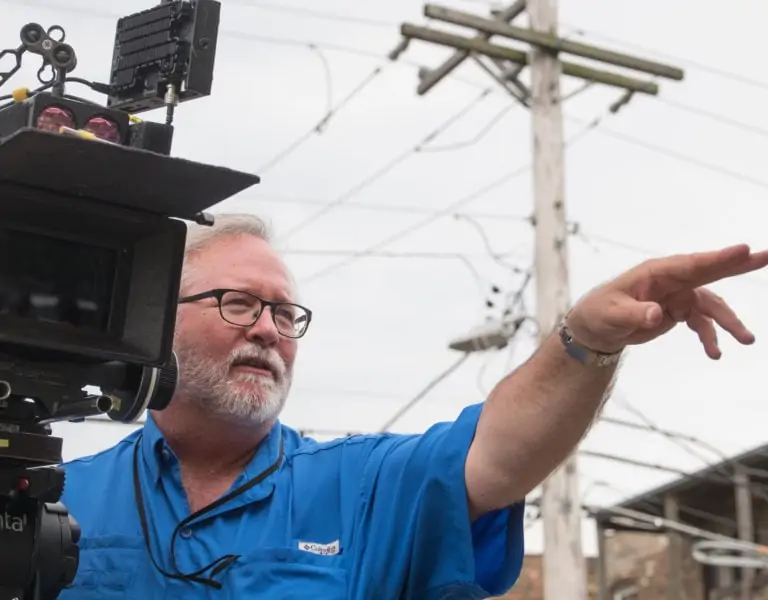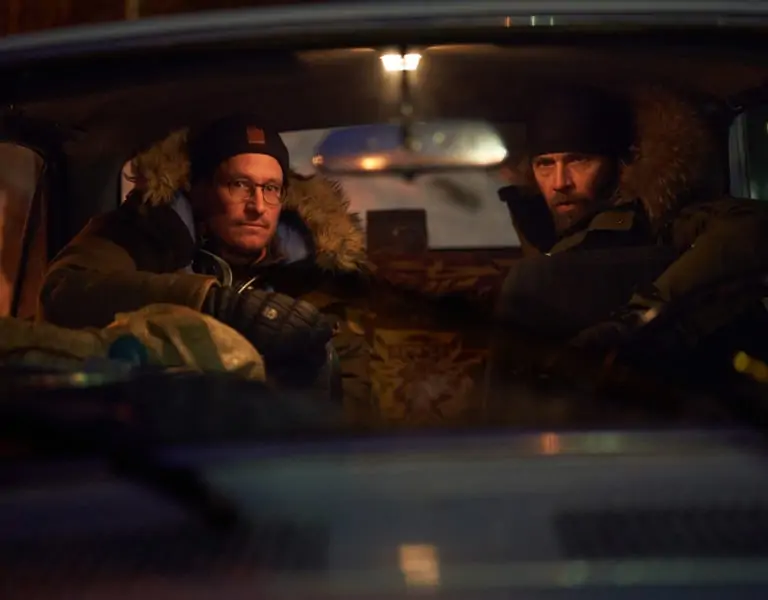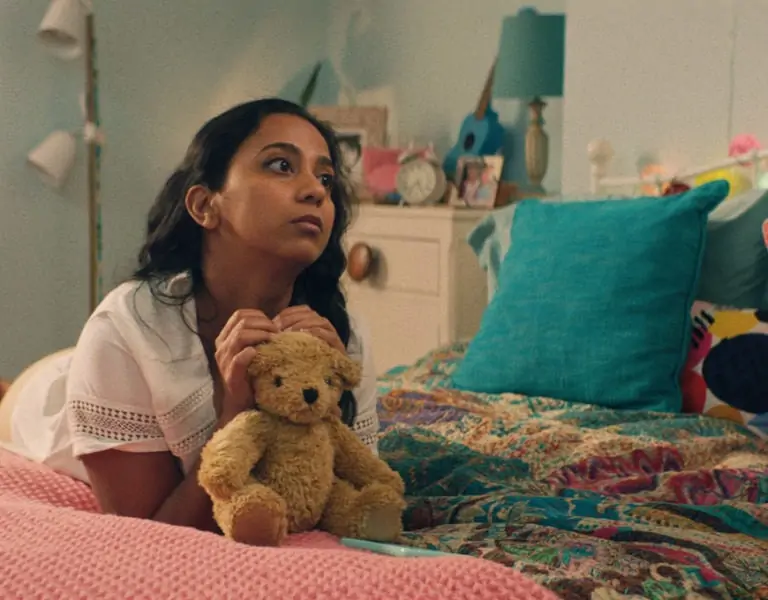Home » Features » Opinion » Across The Pond »
Discover how Emmy-nominated cinematographers and VFX teams collaborate to create compelling visual landscapes, from post-apocalyptic worlds to capturing the essence of a classic sitcom.
“It was a true joy establishing the look of what this world was.”
The observation is perhaps a quintessential distillation of the cinematographer’s art – establishing the landscapes of the stories they’re capturing – whether narrative, or documentary – and how those reflect the inner landscapes of the characters’ lives.
But the quote isn’t from a DP, but rather producer and visual effects supervisor Jay Worth, who had those roles on Amazon’s heavily Emmy-nominated adaptation of Fallout, the legendary game that posits an apocalypse might just be survivable, if its soundtrack is good enough.
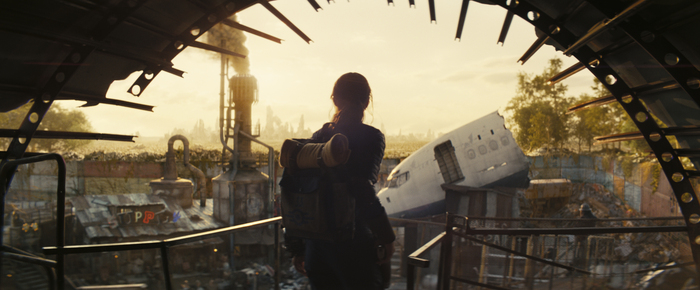
Worth – along with his VFX team – has been nominated precisely for how they helped establish that series look, ranging from a decimated midcentury Los Angeles – in what we hope remains an alternate timeline – to ghouls, mutant gulpers, robotic armour, and two-hundred-year-old people bearing two hundred-year-old grudges.
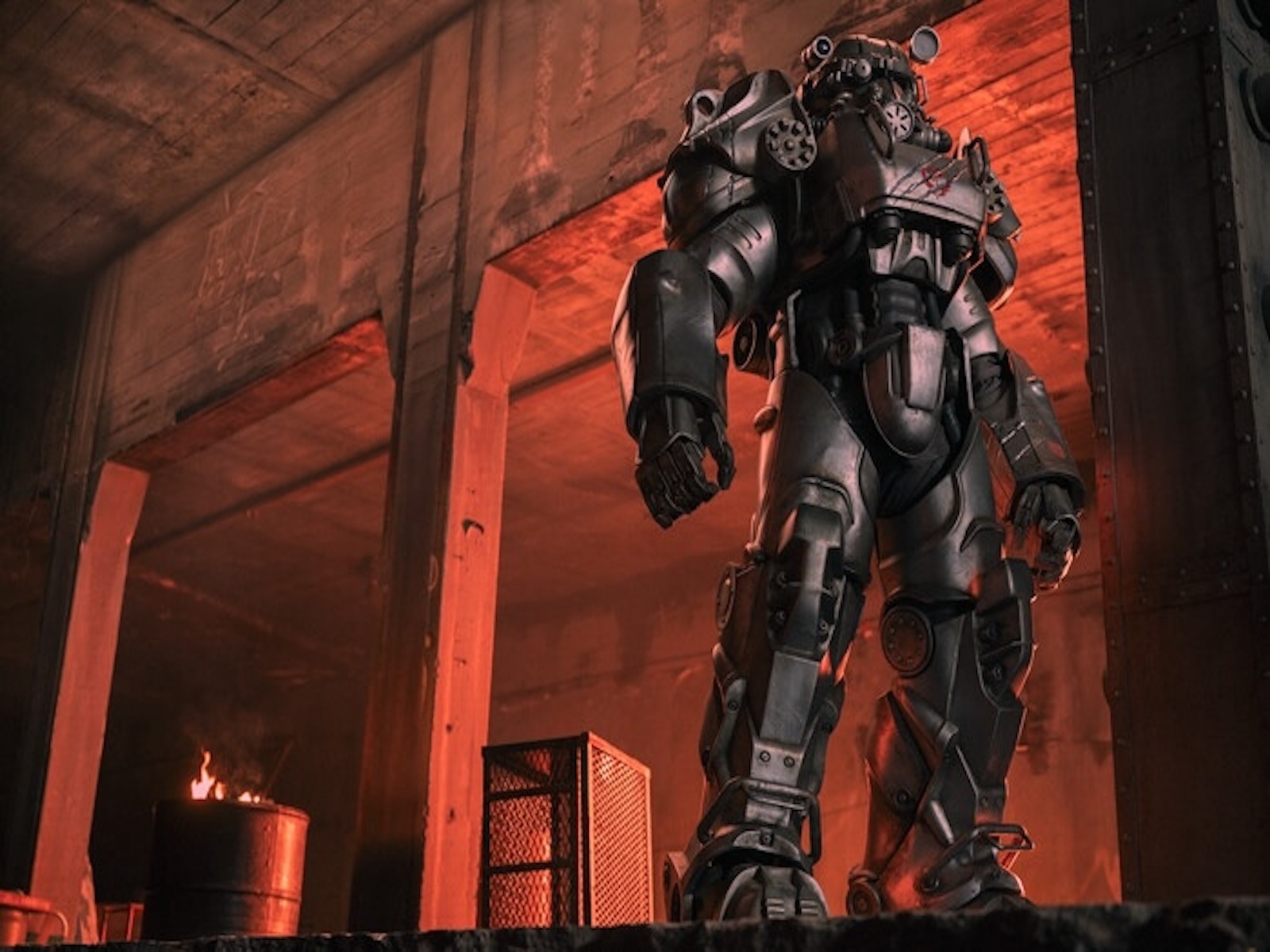
In his longstanding collaboration with executive producers Jonathan Nolan and Lisa Joy, Worth has already found himself a frequent nominee in this same category – and an occasional Emmy and Visual Effects Society winner – for work he’s done on HBO’s Westworld, along with other shows on his resume, including Fringe and Lost.
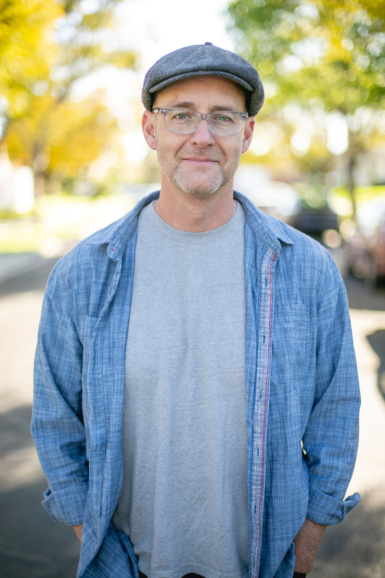
He describes that partnership with Nolan and Joy’s Kilter Films a “joyful, fulfilling collaboration,” and mentions the “really fun rhythm” they’ve gotten into from Westworld days onward. That includes “working with such amazing DPs and production designers,” and while he acknowledges those positions often change from series to series (or in some cases, episode to episode), he also gives the example of a DP’s impact, citing Paul Cameron, ASC, who shot the pilot for Westworld (and later would return to direct episodes), who helped “develop the language of what the series would be.”
Part of that language, as per the well-known predilections of the Brothers Nolan, is to shoot on film. But what happens when you’re recreating a world originally imagined in digits (from gaming consoles), and extrapolating it to a stylised, retro-future version of “real” life?
Worth acknowledges that as far as creating those various dream-and-nightmare scapes, “it’s really hard to shoot LED volume work on a film camera,” though they all found ways to make it work. One such discovery came on the set of the entrance ways to the silos where the ostensible “survivors” have been living for the past couple centuries, and from which our hero, Ella Purnell’s Lucy MacLean, emerges, only to learn that not only are things not what they seem above ground, they weren’t what they seemed below, either.
The “vault door entrance is probably my favourite” of the many built-and-rendered sets they had, Worth says, in part because of how Bruce McCleery – the show’s volume director of photography, lit it.
“We had an elevator, a catwalk and a vault door (and) knew we would have to extend the ground. The content that was on the wall we didn’t touch. That looked so good because of […] the way Bruce lit that interior – and the vault exit.”
Another key effect came with tacking straight into the artifice of not only their tool box, but the source material
Part of silo life was to see vast thriving plains and cornfields in the public gathering areas – all of them projections on metallic walls. To recreate this, “we had to actually render it and track [the images] differently,” to make it look like it was being projected, in situ, on a lenticular screen, resulting in a convincing artifice that was “way more what the vibe of the show was.”
Helping with that vibe was Stuart Dryburgh NZCS ASC (himself an Oscar nominee for Jane Campion’s The Piano), who shot about the half the series’ episodes, and with whom Worth says he “always felt so safe, understanding he was going to shoot things in such a way [that was true to] the look of […] this world.”
Another retro world – even if fleetingly glimpsed – that’s up for an Emmy is the “I’m the Pappy” episode of The Ms. Pat Show, a hit for BET+, where it runs in unexpurgated form, with a more “family friendly” edit for BET itself. The show’s conceit is that comedian Pat Williams has found herself living in a somewhat stereotyped, sitcom-y “suburb,” where she makes an occasional stab at “fitting in,” but mostly delivers bristling, hilarious, and generally R-rated barbs to the people, and situations around her.
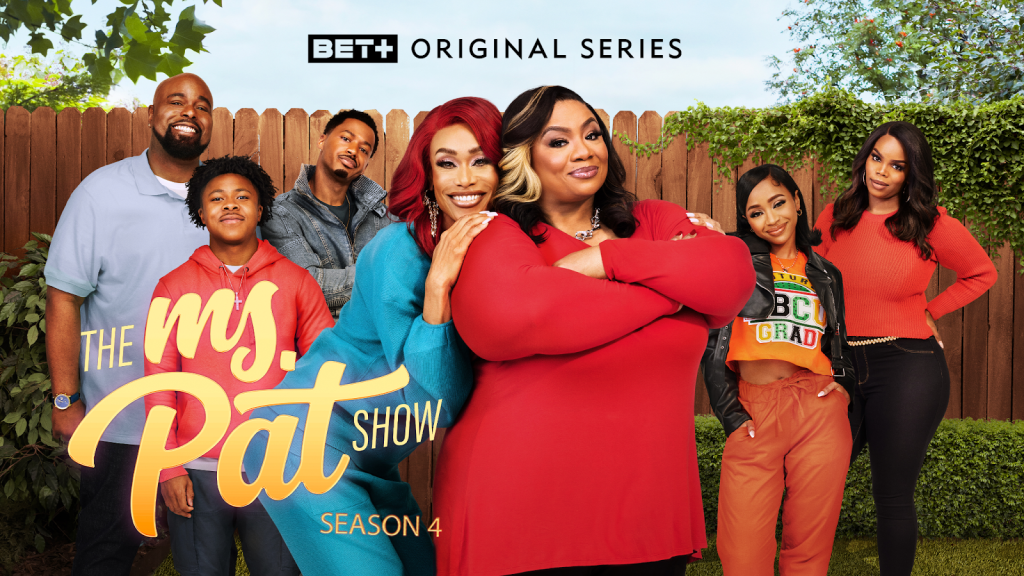
Besides the fish-out-of-water, relocated-family premise derived from sitcom tradition, the show is also shot in what used to be traditional three-camera style. Director Mary Lou Belli – whose TV resume is very long indeed, encompassing both comedy and drama – finds herself with her third consecutive nomination in the “outstanding directing for a sitcom series” category, for the show. She’s also a Television Academy governor, and a board member for Women in Media, under whose auspices we had lunch with her, just a few weeks prior, at Cine Gear.
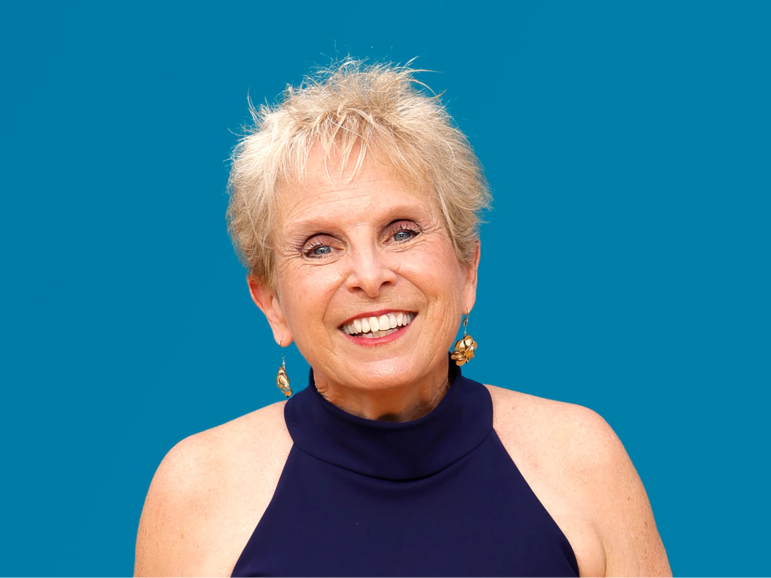
Her book The New Sitcom Career Book – Belli is also a fairly prolific author of showbiz how-tos – carries a preface by former NBC Entertainment President, and storied TV producer Robert Greenblatt, who calls the work “almost like an ode to a three-camera sitcom.”
The Ms. Pat episode starts as a similar ode, with a B&W sequence that layers an I Love Lucy template over a modern African-American family, with the latter quickly overrunning what we might call the “quaint restraints” of the former. And ironically, given that it was a scandal when the married Lucy appeared on TV pregnant with her own baby, the “Pappy” episode deals with more problematic themes of unintended pregnancies, and who is willing to take responsibility for them – and who isn’t.
Belli said it was one of two episodes that started with a B&W sequence, though “you can’t use it unless there’s a reason for it,” a sensibility about motivated actions and through-lines harkening to her roots in live theatre.
When she gets a script in hand, she likes to have “two or three days of rehearsal,” along with “an entire day with the cameras.” She’s thinking of where her masters, closeups and two shots will be “from the time I’m dry blocking it,” something she credits to her own mentor Will Mackenzie, himself a stage actor and theatre director who went on to both numerous Emmy nominations, and TV credits, in a couple eras’ worth of sitcoms, ranging from The Bob Newhart show, to Family Ties, Scrubs, WKRP, Moonlighting, and many more.
And while column constraints often mean we don’t get to luxuriate in as much of a conversation as we’d like to – certainly in the hurly-burly of award season – our colleagues over at The Ankler caught up with Belli as well, as she further laid out “the case for multi-cam”.
It’s a case quite familiar to Gary Baum ASC, who, a couple Emmys ago, after winning a statue for his work on the multi-cam How I Met Your Father, opined to us that the more filmic look of single camera shows, comedy included (even Belli mentions weaving in actual locations when she can – “there’s a basketball court five miles from here,” she’d say in a production meeting) was influencing how he worked in a multi-cam setting.
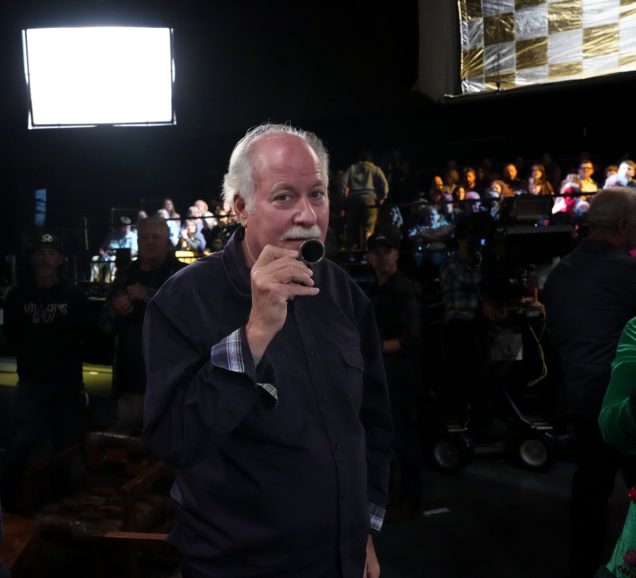
He’s returned with a nomination for the seasonally-themed “Reindeer Games” episode of the Frasier reboot, and when we asked if he still felt there was that same “filmic influence” on comedy shows, he emailed back to say “yes, that is still very much the case. We are in a modern world with linear and streaming TV platforms (and) the new Frasier, while it is not a reboot per se, is a continuation of Frasier’s life.”
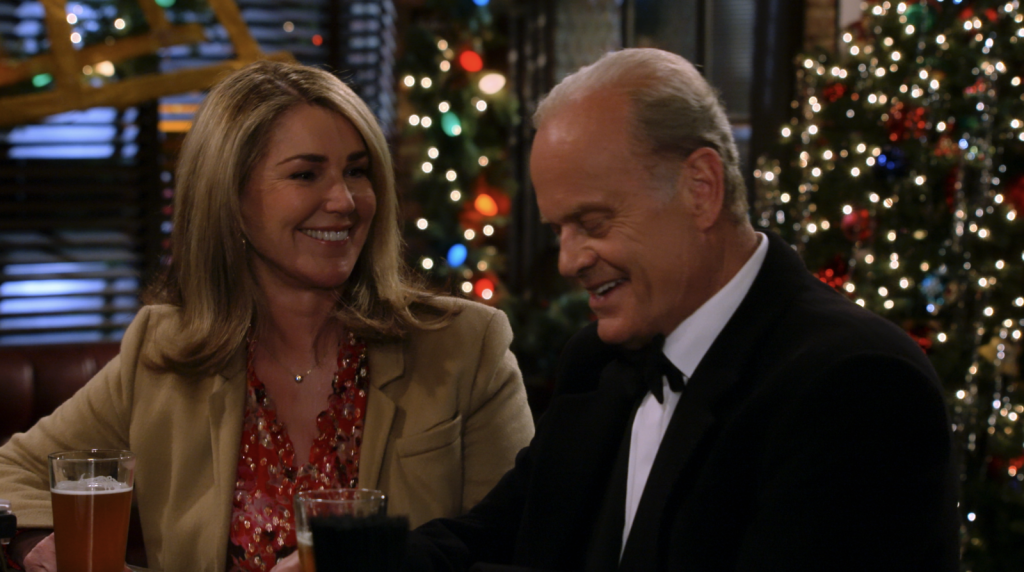
That originally imagined life “was shot on film (so) the major challenges were that we had to make the show look familiar […] yet bring the new series into the modern 4K streaming world,” a “similar experience,” Baum noted, to working on the revival of Will & Grace.
Meanwhile, he now found himself chronicling the misadventures of Kelsey Grammar’s bombastic therapist character “using Sony F55 cameras; however, this season we have upgraded to the Sony Venice. The larger sensor of the Venice is very apparent to us. My lenses are the same: Panavision Primo 11-1’s.”
Baum was able to have “a lot of fun… adjust[ing] light and colour values,” in the nominated episode as “the Christmas theme afforded us a great opportunity to use lights and set decoration as a contrast to the regular show look.”
LET’S GET PHYSICAL
This was similar to the experience of his fellow nominee Jimmy Lindsey ASC, over in single-camera comedy (unlike directing, some of the cinematography categories have single and multi-camera divisions). Coming aboard for season three, he is nominated for the Apple TV+ dramedy Physical, where Rose Byrne plays an 80s-era San Diego housewife, hoping to discover herself via that decade’s spandex-wrapped aerobics boom.
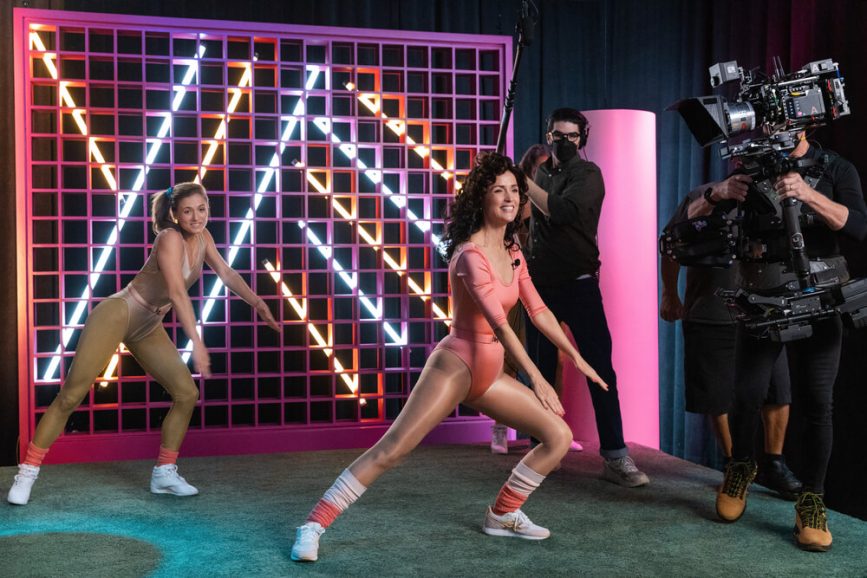
Lindsey has one of the show’s two nominations – the other is for choreography in a different episode – for “Like a Rocket,” where Byrne’s Sheila Rubin goes to a fitness trade show, and hopes to meet one of her VHS idols.
Lindsey, whose previous credits include Star Trek: Picard and VEEP, calls working on the series “an absolute pleasure,” noting that while this was his first time working with show creator Annie Weisman, he had worked with director Stephanie Laing before, not only on VEEP, but Eastbound & Down, too. “Even though I was stepping into a well-established show, I was given the freedom to make creative choices and bring my approach to [Sheila’s] world […] That said, I loved the previous two seasons and the work of the DPs and Production Designers that had the helm before me, so I wasn’t looking to shift the look and feel in a completely different direction. [While] there were definitely changes I wanted to make, that had more to do with the storyline and character development and less to do with the established visual language.”
That language also took him to a new set of lenses. While the first season “was shot primarily on Panavision T Series Anamorphics with the occasional use of B series,” that “preferred aesthetic” with vintage glass tended to limit “the desired all-in-one wide-into-closeup shot design.” Season Two used C series glass – “some of my favorite lenses” – but in wanting to embrace the show’s “original intention,” he approached the both legendary and always reliable Dan Sasaki at Panavision “to design a solution. As he always does, Dan came up with a brilliant idea. Essentially, he delivered T Series lenses with B Series front elements. This gave us a beautiful B Series creamy, vintage feel with soft edge focus and classic 1970s flare characteristics, but with the faster T-stops and improved minimum focus of the T Series, allowing me to maintain the dynamic camera moves and get the look that I believe best suits the series.”
Shooting on an ALEXA Mini LF camera in a 2:1 aspect ratio, he also credits colourist J Cody Baker at Co3, for “the custom low contrast look.”
Of this specific episode, set at 1983’s LA Health & Fitness Expo, and which he calls “one of the most ambitious” of the season, Lindsey also thanks his collaborations with (also new) production designer Alec Contestabile and costume designer Ernesto Martinez, saying he’s “thrilled to be nominated this year! Physical is a series I am extremely proud to be a part of. [This season] allowed me to join a team of wonderfully passionate filmmakers and dig deep into the 1980’s vibe. What could be better?!!!”
Echoing those sentiments is Florian Hoffmeister BSC, for his own nomination for True Detective: Night Country, which finds itself in the thick of things, Emmy-wise, with 19 overall nods, including Hoffmeister’s work on the series’ sixth episode.
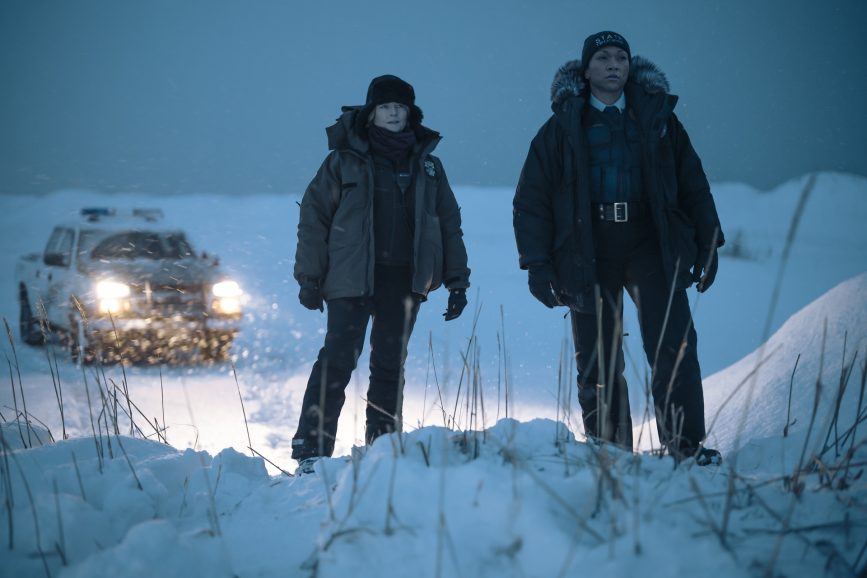
A previous Oscar nominee for Tár, and earlier Emmy winner for the Great Expectations miniseries, he checked in from The War of the Roses remake (now simply The Roses), to write that he “salute[s] all my fellow nominees, some of [whom] I know personally. It is great to be recognized with all of them. I am sure everybody on my crew who stood the endurance test of 112 shooting days with [minus 47 degree] night shoots in subzero temperatures will be pleased to hear of this nomination. May we all celebrate all our hard work together!”
Meanwhile, the show already garnered accolades at the recent Location Managers Guild International Awards , as Film in Iceland won the Outstanding Film Commission Award for its work, wherein the land of Viking lore stood in for Alaska’s “Night Country” throughout the shoot.
The LMGI gathering, held at the Wallis Annenberg Center for the Performing Arts in Beverly Hills for the first time, is either the capper to last year’s award season, if you go by the win for Oppenheimer on the feature side, or a kickoff to this year’s calendar, when considering that Fallout, Ripley, and Fargo also won in their respective television categories.
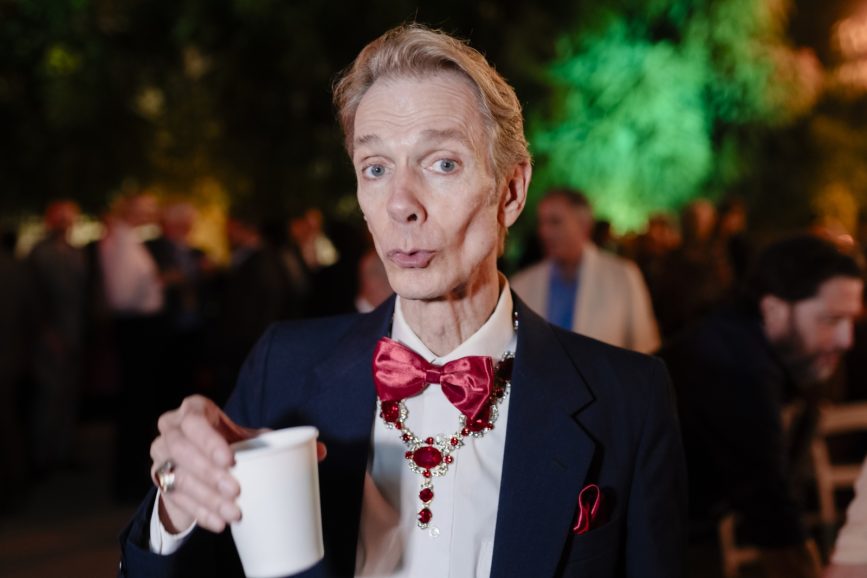
Meanwhile, while overflowing columns prevent us from giving it the full spotlight it warrants, in the midst of all this nominating and handicapping, Hollywood hosted its own film festival, in the heat of August: the Hollyshorts Festival, returning for its 20th (!) edition.
The winners there become Oscar qualifying – which means, they are eligible to be voted on as potential short subject nominees. Those that don’t finish in the top categories move on to the next Oscar-qualifying festival, as hope – one of the main fuel rods of showbiz, especially in uncertain times – continues to spring eternal.
There was much inventive work, and we don’t have time to do it all justice, though one of our many favourites was Jane Austen’s Period Drama, where, “in the middle of a long-awaited marriage proposal, Miss Estrogenia Talbot gets her period.. and it soon becomes clear that [her suitor’s] very expensive education has most certainly missed a spot”.
While the comedy plays out, the recreated historical period – set in 1813 – was also impressive. DP, Luca Del Puppo, who has shot everything from genre features to CNN’s Jake Tapper series United States of Scandal, wrote to say they used “the S35 mode on a Sony Venice, in order to keep deeper focus, and not have any breathing in the lens […]we came to Cooke S4s and an Angenieux 24-290,” along with “classic colour correction filters in order to keep the sensor at 5500k and take the edge off modern dyes and fabrics. Our costume designers Barrett Hutchinson and Paula Higgins made all the wardrobe by hand which was a feat in itself, and I wanted to help with that.”
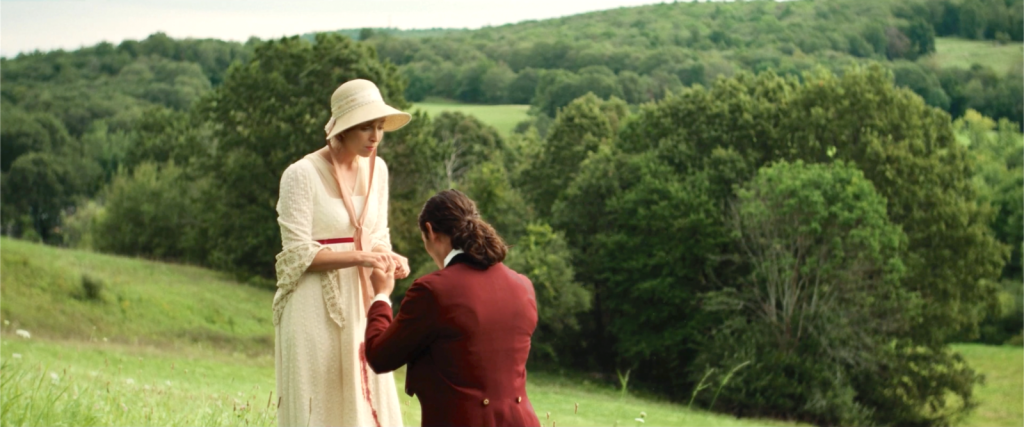
It’s an example of how much thought goes into even a “short” subject, and how nimble folks need to be – both above, and especially below, the proverbial line– to keep building resumes, connections, and to keep working.
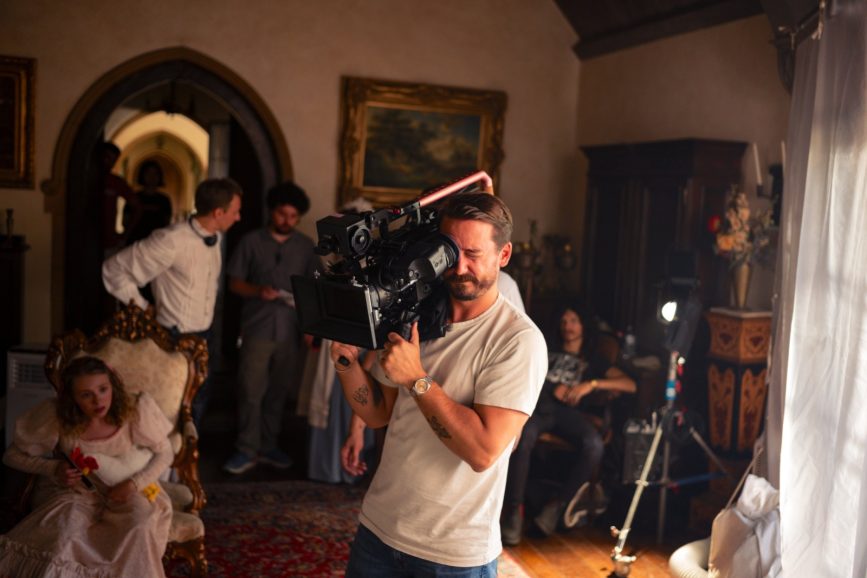
Indeed, getting back to work was one of the themes in the acceptance speeches at LMGI, though America will still be collectively holding its breath in many regards for a few more months, yet.
However, the suspense about this year’s Emmy winners, at least, will be lifted by the time our next column rolls around, and we’ll tell you how it all looked from backstage in the media room, when we see you then.
AcrossthePondBC@gmail.com / @TricksterInk







